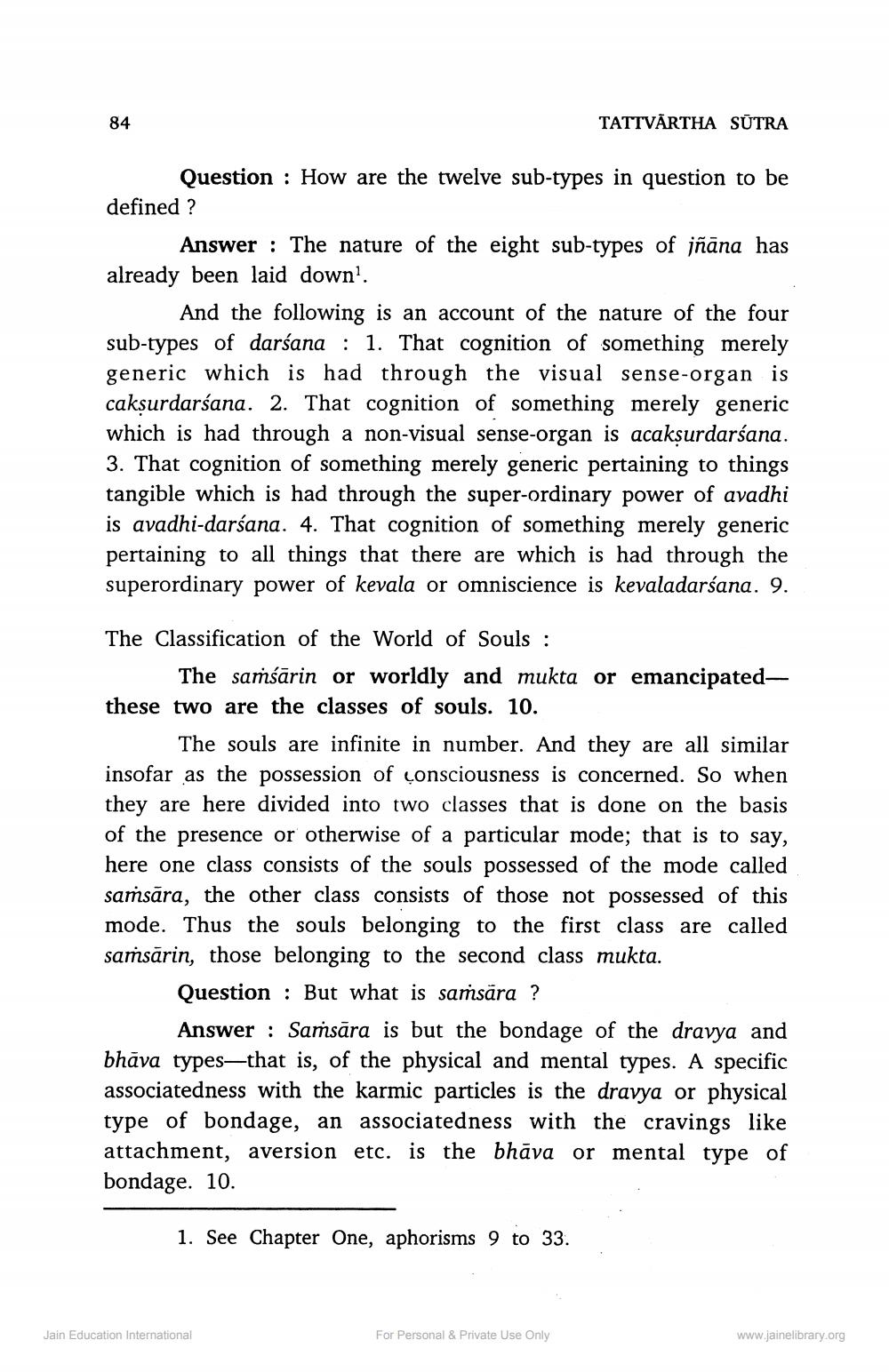________________
84
Question: How are the twelve sub-types in question to be
defined?
TATTVÄRTHA SŪTRA
Answer: The nature of the eight sub-types of jñāna has already been laid down1.
And the following is an account of the nature of the four sub-types of darśana 1. That cognition of something merely generic which is had through the visual sense-organ is cakṣurdarśana. 2. That cognition of something merely generic which is had through a non-visual sense-organ is acakṣurdarśana. 3. That cognition of something merely generic pertaining to things tangible which is had through the super-ordinary power of avadhi is avadhi-darśana. 4. That cognition of something merely generic pertaining to all things that there are which is had through the superordinary power of kevala or omniscience is kevaladarśana. 9.
The Classification of the World of Souls :
The samsarin or worldly and mukta or emancipated— these two are the classes of souls. 10.
The souls are infinite in number. And they are all similar insofar as the possession of consciousness is concerned. So when they are here divided into two classes that is done on the basis of the presence or otherwise of a particular mode; that is to say, here one class consists of the souls possessed of the mode called samsara, the other class consists of those not possessed of this mode. Thus the souls belonging to the first class are called samsarin, those belonging to the second class mukta.
Question: But what is saṁsära ?
Answer: Samsara is but the bondage of the dravya and bhāva types-that is, of the physical and mental types. A specific associatedness with the karmic particles is the dravya or physical type of bondage, an associatedness with the cravings like attachment, aversion etc. is the bhava or mental type of bondage. 10.
1. See Chapter One, aphorisms 9 to 33.
Jain Education International
For Personal & Private Use Only
www.jainelibrary.org




